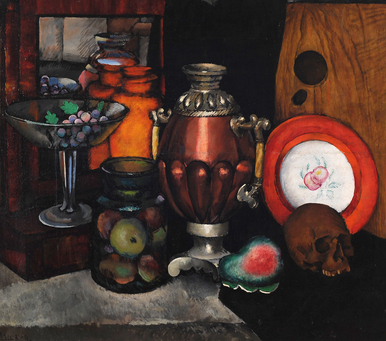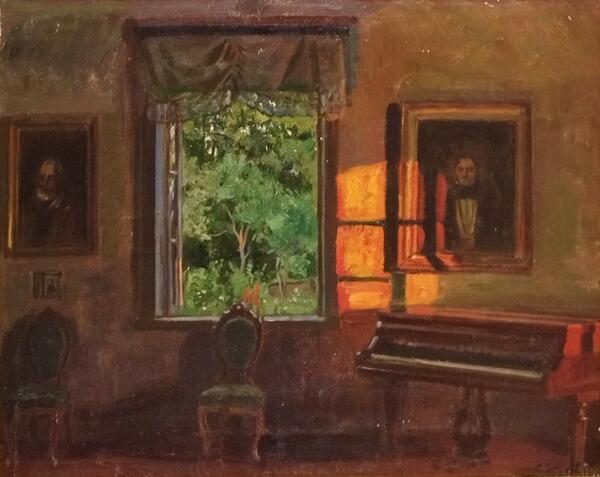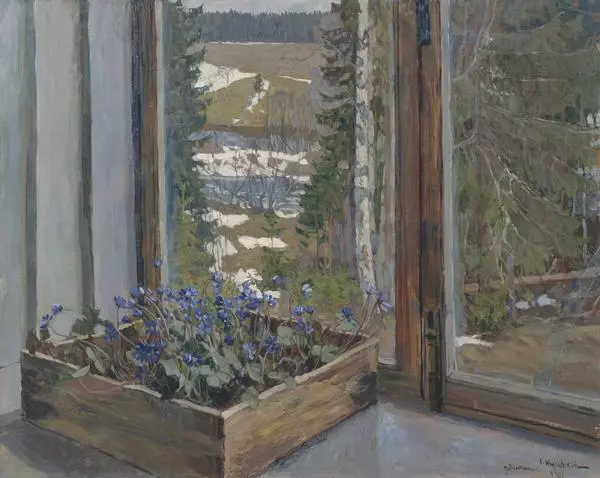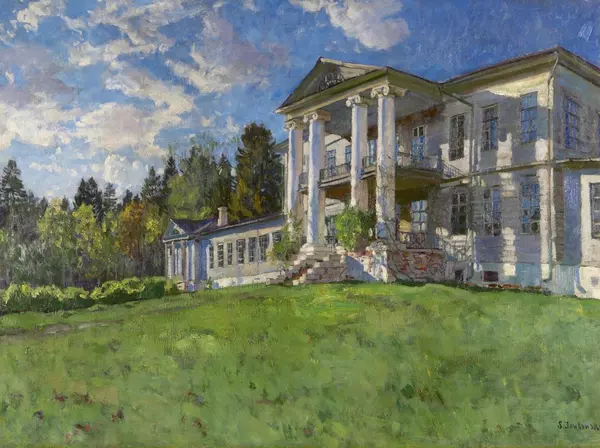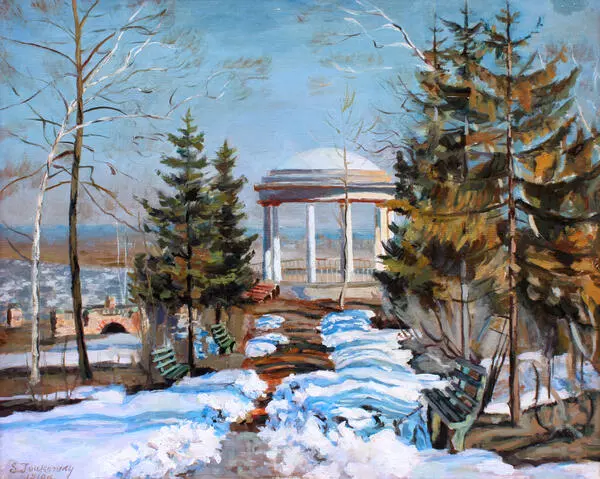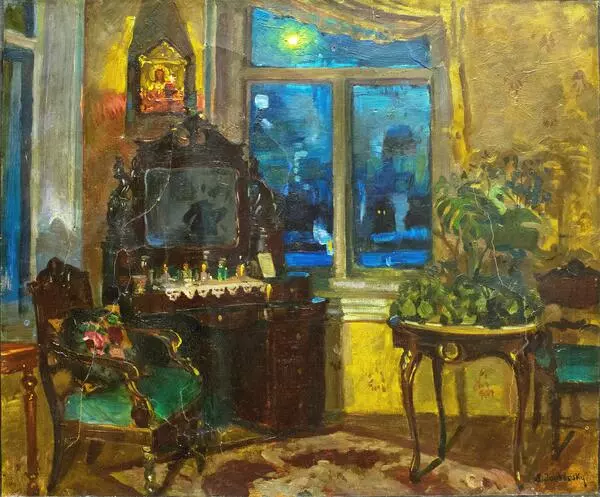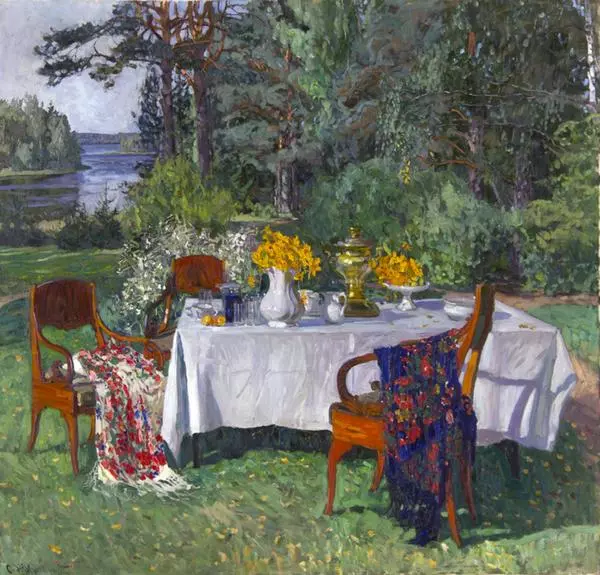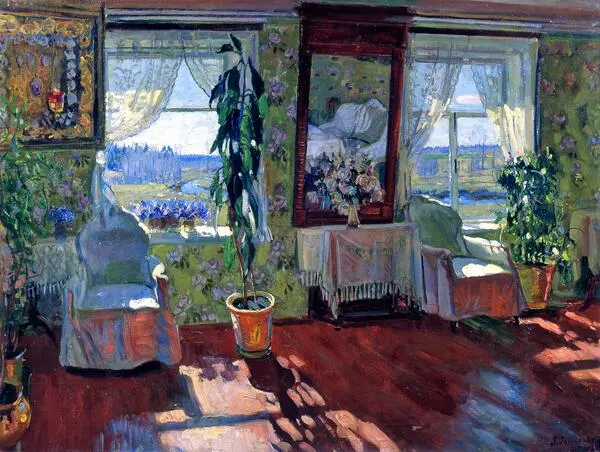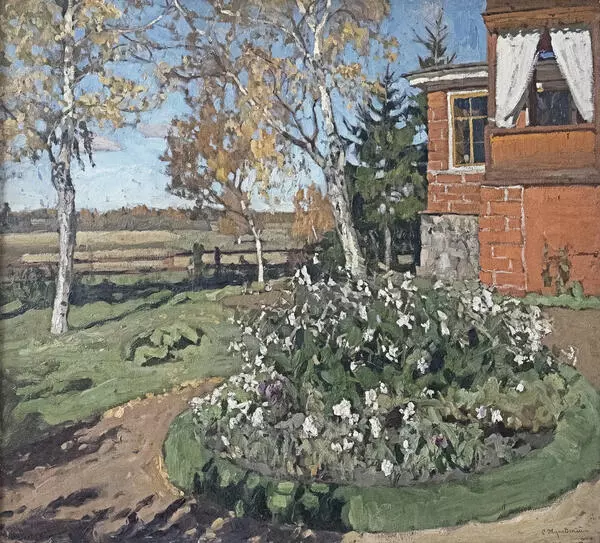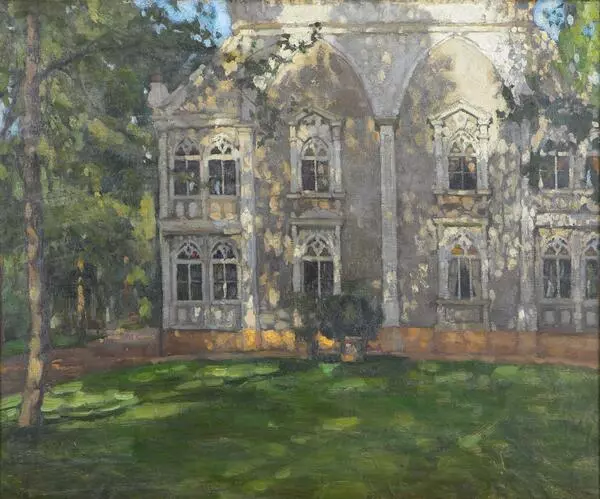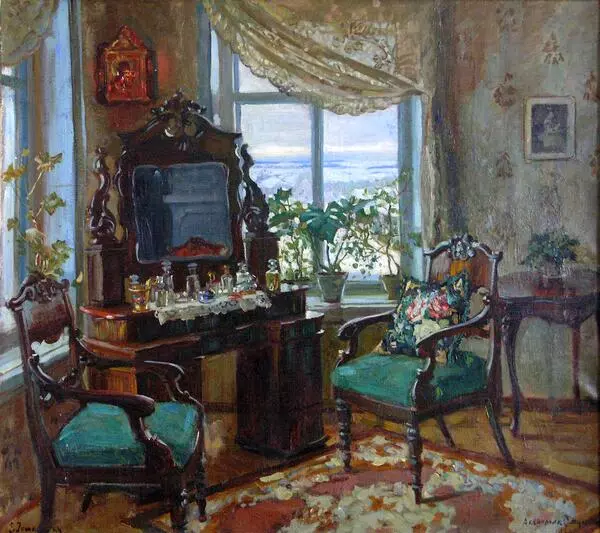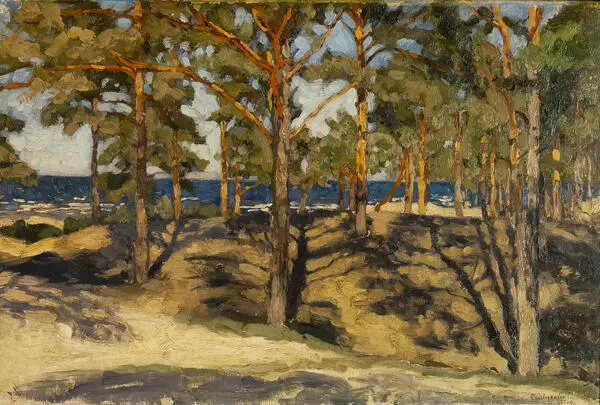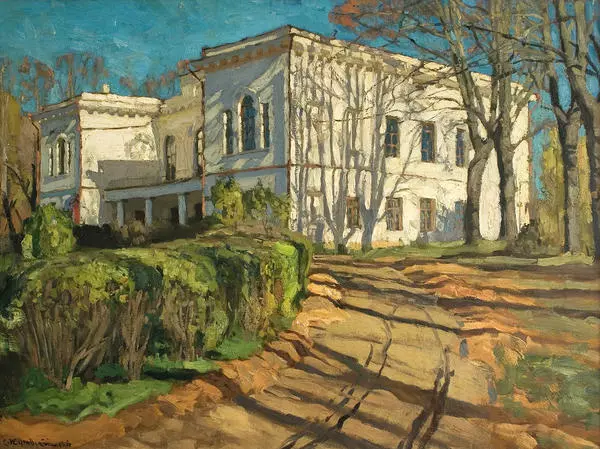In the turbulent post-revolutionary years of the early 20th century, the image of the noble estate embodied all the best things left in the past. StanislAv ZhukOvsky, a Russian landscape artist that lived at the turn of the 20th century, dedicated many of his works to it.
Zhukovsky praised this vanishing world with sensitivity. He was familiar with both the charm of estate life and its loss. He spent his childhood in a house similar to the one depicted in ‘Fall, ’ but not as the owner. Zhukovsky’s father was deprived of his noble status and property for his involvement in the Polish National Uprising in 1863. So he lived with his family in his own estate as a tenant.
“Fall” was created in 1918. We see a corner of a room inside an old house in the RozhdEstveno estate located near the town of ZvenIgorod that the artist would often visit. The living room with open windows is pierced with bright but already cold rays of the autumn sun. The armchairs, upholstered with antique damask fabric, are moved to the wall as if waiting for their owners. Portraits on the walls keep the memory of bygone times. However, neither armchairs nor flowers on the table and open windows can enliven this interior. The invisible museum spirit has already settled here.
The sad elegiac feeling is mixed with Zhukovsky’s intrinsic rapture at the beauty of the world. The artist is fascinated by every moment—fleeting and inexpressible. We feel this beauty in the painting saturated with light and colored shadows, as well as in the pastose style of the master.
This painting clearly demonstrates the dominant features of Zhukovsky’s style, which largely reflect the general artistic trends in Russian art at the turn of the century. That time was marked by the lack of one single worldview that would play a leading exceptional role. Many artists not only moved from one painting style to another with time but also synthesized different styles within the one artwork. It is also often difficult to attribute Zhukovsky’s works to one particular genre. They have both the features of a landscape painting and an interior portrait.
Zhukovsky praised this vanishing world with sensitivity. He was familiar with both the charm of estate life and its loss. He spent his childhood in a house similar to the one depicted in ‘Fall, ’ but not as the owner. Zhukovsky’s father was deprived of his noble status and property for his involvement in the Polish National Uprising in 1863. So he lived with his family in his own estate as a tenant.
“Fall” was created in 1918. We see a corner of a room inside an old house in the RozhdEstveno estate located near the town of ZvenIgorod that the artist would often visit. The living room with open windows is pierced with bright but already cold rays of the autumn sun. The armchairs, upholstered with antique damask fabric, are moved to the wall as if waiting for their owners. Portraits on the walls keep the memory of bygone times. However, neither armchairs nor flowers on the table and open windows can enliven this interior. The invisible museum spirit has already settled here.
The sad elegiac feeling is mixed with Zhukovsky’s intrinsic rapture at the beauty of the world. The artist is fascinated by every moment—fleeting and inexpressible. We feel this beauty in the painting saturated with light and colored shadows, as well as in the pastose style of the master.
This painting clearly demonstrates the dominant features of Zhukovsky’s style, which largely reflect the general artistic trends in Russian art at the turn of the century. That time was marked by the lack of one single worldview that would play a leading exceptional role. Many artists not only moved from one painting style to another with time but also synthesized different styles within the one artwork. It is also often difficult to attribute Zhukovsky’s works to one particular genre. They have both the features of a landscape painting and an interior portrait.

